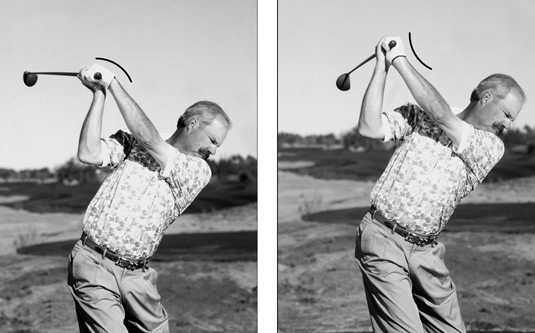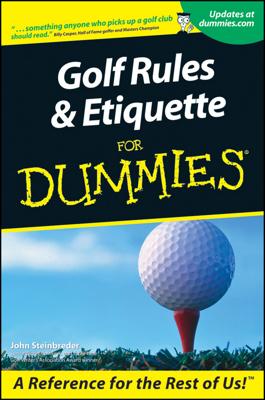The swing plane, at its most basic, is the path your golf club’s shaft follows when you swing. Swing plane can get complicated — especially if you want to cover all the possible variations in the plane from address to the end of the follow-through.
The plane of your swing is dictated to a large extent by the shaft’s angle at address. The swing you make with a wedge in your hands is naturally more upright — or should be — than the swing you make with a driver. The driver has a longer shaft than the wedge and a flatter lie (the angle at which the shaft emerges from the clubhead), so you have to stand farther away from the ball.
The easiest way to keep your swing on plane is to have a series of checkpoints. The following checkpoints assume that you’re swinging a driver and that you’re right-handed:
Checkpoint #1: At address. The shaft starts at a 45-degree angle to the ground.
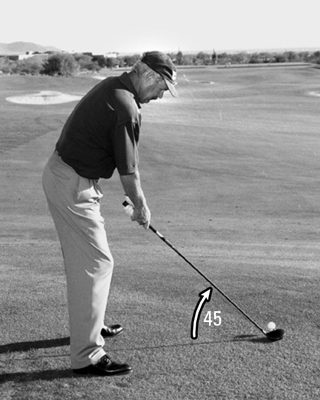
Checkpoint #2: Swing the club back until your left arm is horizontal. At that point, the club’s butt end (the end of the grip) points directly along the target line. (The target line is the line that runs through both the target and the ball.)
If the end of the grip is pointing along the target line, you’re on plane. If the end of the grip points above the target line, your swing is too flat, or horizontal; if the grip end is below the target line, your swing is too upright, or vertical.
Checkpoint #3: At the top of your backswing, the club should be parallel with a line drawn along your heels. If the club points to the right of that line, you'll probably hook the shot. A club pointing to the left of that line leads to a slice. Here are some tips for this checkpoint:
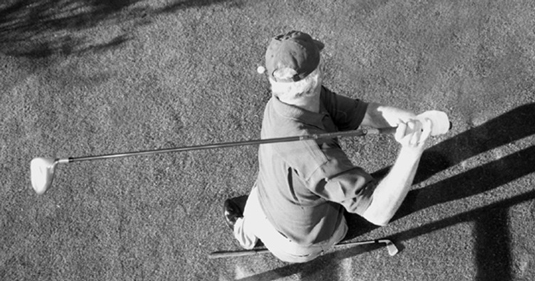
Your left arm and your shoulders must be on the same slope. In other words, your arm and shoulders are parallel.
The top of your swing is basically controlled by your right arm, which forms a right angle at the top of the swing. Your elbow is about a dollar bill’s length away from your rib cage.
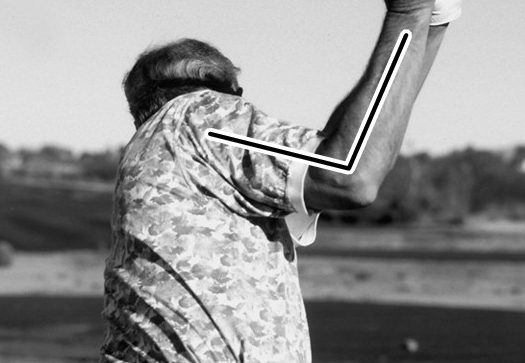
Your shoulders turn so that they’re at 90 degrees to the target line.
The clubface is angled parallel to your left arm and your shoulders. Your left wrist controls this position. Ideally, your wrist angle remains unchanged from address to the top.
Checkpoint #4: Halfway down, at the point where your left arm is again horizontal, the shaft’s butt end should again point at the target line. This position and the one described in the second checkpoint are, in effect, identical in swing-plane terms.
Checkpoint #5: Impact is the most important point in the golf swing. If the clubface is square when it strikes the ball, what you do anywhere else doesn’t really matter. But if you want to be consistent, try to visualize impact as being about the same as your address position, except your hips are aimed more to the left of the target than at the address position, and your weight is shifting to the left side.
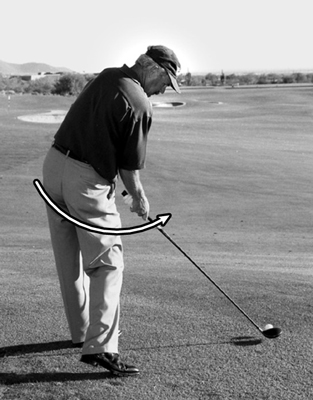
To analyze your swing, use a video, a series of still photos, or a mirror — or have someone watch you.
If your wrist angle changes, it’s either bowed or cupped (see Figure 7-3). A bowed (bent-forward) left wrist at the top makes the clubface “look” skyward in what is called a closed position. From that position, a hook is likely. A cupped (bent-backward) wrist makes the clubface more visible to someone looking you in the face. A cupped wrist leads to an open position, which probably results in a slice.
